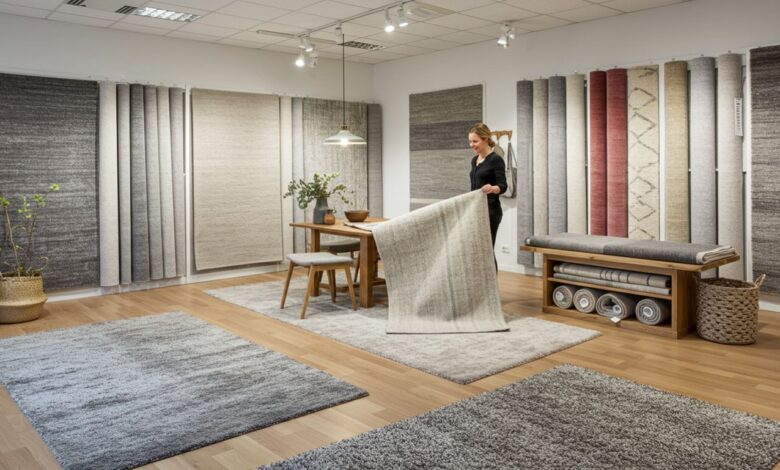Wollmatten: The Timeless Comfort and Sustainability of Wool Mats
Introduction
In a world moving toward sustainability and eco-conscious living, Wollmatten — or wool mats — have emerged as a timeless home essential that combines natural comfort, durability, and aesthetic charm. Derived from high-quality sheep wool, these mats are valued for their softness, insulation, and ability to regulate temperature naturally.
Whether you’re decorating a cozy living space, seeking a sustainable flooring option, or exploring eco-friendly textiles, Wollmatten offer a blend of tradition, craftsmanship, and environmental responsibility that few materials can match.
This article explores the origin, production, benefits, and modern relevance of Wollmatten, showing why these wool mats are more than just floor coverings — they’re a lifestyle statement.
What Are Wollmatten?
The term Wollmatten comes from the German words “Wolle” (wool) and “Matten” (mats). Simply put, Wollmatten are mats or carpets made primarily from natural sheep wool.
These mats are prized for their:
- Soft texture and warmth
- Moisture-wicking properties
- Durability and natural resilience
- Eco-friendly and biodegradable composition
Unlike synthetic mats, Wollmatten do not rely on chemical fibers. Instead, they are made using traditional wool-felting or weaving techniques that have been refined over centuries.
The Origins and History of Wollmatten
Wool-based mats have a long and rich history that dates back to ancient civilizations. Nomadic tribes in Central Asia and Europe used felted wool mats for insulation and floor coverings in tents and homes.
In Germany, Wollmatten became a symbol of comfort and craftsmanship, often handmade by local artisans using native sheep wool. Over time, these mats evolved from simple functional items to decorative pieces reflecting regional styles and cultural identity.
From Tradition to Modern Design
Today, while machine production has made Wollmatten more accessible, many artisans still use handcrafting methods. The modern versions combine traditional techniques with contemporary aesthetics — available in minimalist designs, vibrant patterns, or custom-made artistic forms.
How Wollmatten Are Made
The production process of Wollmatten reflects both artistry and precision. Let’s break it down step by step:
1. Wool Selection
High-quality, ethically sourced sheep wool is selected. Merino and local European wool varieties are often preferred for their softness and texture.
2. Cleaning and Carding
The wool undergoes cleaning to remove lanolin and impurities, followed by carding — a process that aligns the fibers.
3. Felting or Weaving
- Felted Wollmatten: Made by compressing and matting wool fibers using moisture, heat, and pressure.
- Woven Wollmatten: Produced using looms that intertwine fibers into structured mats.
4. Finishing Touches
Once formed, the mats are trimmed, shaped, and sometimes dyed using natural pigments. Some manufacturers add non-slip or water-resistant backings for added functionality.
Key Benefits of Wollmatten
The growing popularity of Wollmatten isn’t just about aesthetics — it’s rooted in practical and environmental advantages.
1. Natural Insulation
Wool fibers trap air, providing natural insulation. This means your floor stays warm in winter and cool in summer.
2. Moisture Regulation
Wool absorbs humidity without feeling damp, maintaining a comfortable indoor climate.
3. Hypoallergenic Properties
Unlike synthetic fibers, wool resists dust mites and bacteria, making Wollmatten ideal for allergy sufferers.
4. Sustainability
Wool is a renewable resource that decomposes naturally, unlike plastic-based alternatives.
5. Durability
With proper care, Wollmatten can last decades without losing texture or comfort.
6. Acoustic Benefits
Wool absorbs sound waves, reducing echo and enhancing the acoustics of a room.
Design and Aesthetic Appeal
Versatility in Home Decor
Wollmatten come in a wide variety of textures, colors, and designs. Whether you prefer a rustic farmhouse aesthetic or a sleek Scandinavian look, there’s a wool mat to complement your style.
Popular Design Styles
- Minimalist neutrals: Cream, beige, and gray tones for modern interiors
- Patterned traditional: Inspired by ethnic and regional designs
- Custom handmade: Unique textures and motifs from artisan workshops
Perfect Placement Ideas
- Living rooms for warmth and comfort
- Bedrooms for a cozy feel underfoot
- Offices or reading corners for acoustic and visual balance
Caring for Your Wollmatten
Maintaining Wollmatten ensures longevity and freshness. Here are some tips:
- Regular Vacuuming: Removes dust and prevents dirt buildup.
- Spot Cleaning: Use mild wool-friendly detergent for stains.
- Avoid Direct Sunlight: Prolonged UV exposure can fade natural dyes.
- Rotate the Mat: Prevents uneven wear.
- Professional Cleaning: Once a year for deep maintenance.
Wollmatten and Sustainability
Eco-Friendly Production
The wool industry supports sustainable farming, as sheep shearing is a renewable process. Additionally, natural dyes and handmade production reduce carbon emissions.
Biodegradability
Unlike synthetic mats, Wollmatten decompose without harming the environment. When disposed of, they enrich soil with natural nutrients.
Ethical Considerations
Responsible brands ensure humane treatment of sheep and fair labor conditions for artisans — aligning with global sustainability standards.
Comparing Wollmatten with Synthetic Mats
| Feature | Wollmatten (Wool Mats) | Synthetic Mats |
| Material | 100% natural wool | Polyester, nylon, or acrylic |
| Durability | High | Moderate |
| Comfort | Soft, breathable | Often coarse or slippery |
| Eco-Friendliness | Fully biodegradable | Non-biodegradable |
| Cost | Slightly higher | Lower, but shorter lifespan |
| Maintenance | Easy with proper care | May degrade with washing |
Verdict: While synthetic mats may seem cheaper, Wollmatten offer unmatched comfort, sustainability, and long-term value.
The Future of Wollmatten in Modern Living
As eco-conscious design becomes mainstream, Wollmatten are finding new roles in modern homes and architecture. Designers are integrating them into smart interiors, eco-hotels, and sustainable office spaces.
Innovations include:
- Recycled wool blends for circular production
- Smart-textile Wollmatten with temperature regulation
- Minimalist modular mats for modern compact homes
The combination of timeless beauty and modern innovation ensures that Wollmatten remain relevant in the future of interior design.
FAQs About Wollmatten
1. What makes Wollmatten different from regular carpets?
Unlike synthetic carpets, Wollmatten are made from pure wool, offering better insulation, breathability, and eco-friendliness.
2. Are Wollmatten suitable for people with allergies?
Yes. Wool naturally resists dust mites and mold, making it ideal for allergy-prone individuals.
3. Can Wollmatten be used in humid environments?
Wool regulates moisture effectively, but excessive dampness should be avoided to maintain longevity.
4. How long do Wollmatten last?
With proper care, they can last 10–20 years or more, depending on usage.
5. Are Wollmatten expensive?
While initially costlier than synthetic options, they offer long-term savings due to durability and low maintenance.
Conclusion: Why Wollmatten Are Worth Investing In
Wollmatten represent more than just a decor choice — they embody comfort, tradition, and sustainability. Their natural insulation, elegant appearance, and eco-friendly composition make them a perfect addition to any modern or traditional home.
As the world embraces greener lifestyles, investing in Wollmatten is a simple yet impactful way to create a healthier, more comfortable living space.





Post Comment